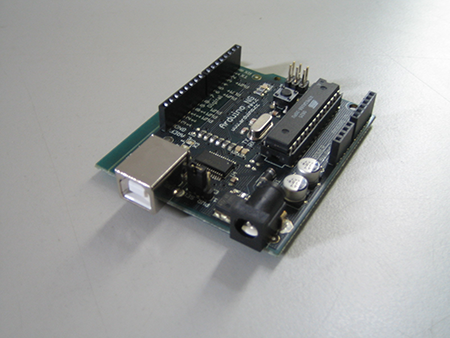Was ist Arduino?
Arduino ist ein Projekt, das aus drei Teilen besteht: einem I/O Board, einer Software und einer Website.
Das I/O Board ist eine kleine Platine, die analoge und digitale Signale erfassen und ausgeben kann. Sie wird z.B. per USB mit dem Rechner verbunden. Bei digitalen Eingangssignalen handelt es ich um Signale, die entweder an oder aus sein können. Taster, Neigungsschalter erzeugen digitale Signale. Analoge Signale können vom I/O Board in 1024 Stufen erfasst werden. Sensoren, die analoge Werte liefern, sind z.B. Drehwiderstände, Licht-, Druck- und Temperatursensoren.
Mit der Arduino-Software ist es möglich, ein Programm auf das I/O Board zu spielen, das Signale erfassen, auswerten und ausgeben kann. Die Software basiert auf C und ist sehr schnell zu erlernen. Es gibt Versionen für Windows, OSX und Linux und man kann sie frei herunterladen.
Die Arduino-Website beinhaltet Turorials, Informationen zur Hardware und ein Hilfe-Forum.
Mittlerweile gibt es das Arduino-Board in verschidenen Versionen z.B.:
- Arduino Duemilanove
14 Digital / davon 6 PWM, 6 Analog – das klassische Arduino - Arduino Mega
54 Digital / davon 14 PWM, 16 Analog – für alle, die sich mehr Kanäle gewünscht haben - Arduino Nano
14 Digital / davon 6 PWM, 8 Analog – sehr kleine Bauform - Arduino Bluetooth
14 Digital / davon 6 PWM, 6 Analog – wie der Name sagt mit Bluetooth-Schnittstelle - LilyPad
14 Digital / davon 6 PWM, 6 Analog – besonders für den Einsatz in Textilien geeignet - Freeduino
14 Digital / davon 6 PWM, 6 Analog – freies Arduino-Projekt - Roboduino
14 Digital / davon 6 PWM, 6 Analog – Besonders für den Einsatz von Servos geeignet
